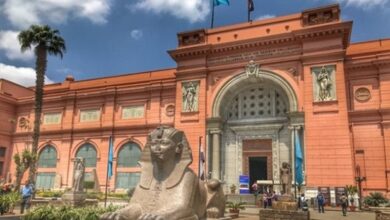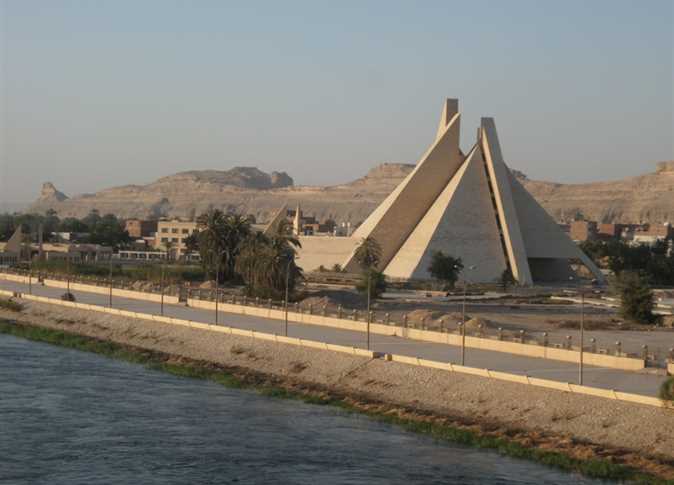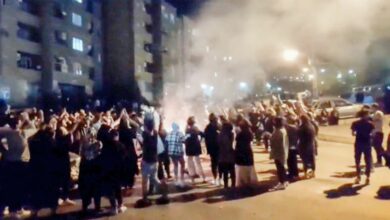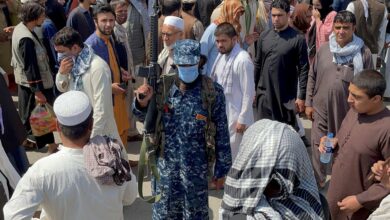Ahmed Hamdy sat on a sidewalk with a small notepad juxtaposed behind a Tahrir demonstration protesting military trials. He looked like an Egyptian Beatnik with his blistered and dirty toes hanging out from his open-toe sandals and shaggy hair. His head was next to his pen, i.e. 10 centimeters away from the empty pages of his tattered notebook.
The scene indicated a poet at work, but as he explained, he was working on something else. “I’m trying to write chants for the protests,” he said.
Hamdy is not one of the known chanters. However, he always felt the poetic urge and now, as a revolutionary/poet, feels that during the 25 January Revolution, he knew what he wanted his role to be from the beginning. “This is the time for any poet to get to work and write chants,” he said.
If you went to any popular gathering in Cairo over the past 4 months, chances are you either witnessed, or took part in some sort of chanting. Even in an academic setting, such as at a conference on the constitution, chants spontaneously break out quite easily. The chant-masters rely on the infectious applause method, taking advantage of the near instinctual desire for people to chant.
At some point, someone who is fidgeting and uneasily shifting throughout the event can’t take it any longer, and breaks out in a chant. People tend to either catch the bug and join in, or patiently wait until the chant-master’s self-consciousness kicks in and he sits back down.
Demonstrators attend such events with lungs prepared and ready for chanting. Larger events tend to attract more chant-masters, using physical structures or their friends’ shoulders as soap-boxes. Any large Tahrir Square protest elicits a great deal of chanting window shoppers, surveying each chanting cluster, before deciding which one to join. Depending on the “shopper’s” personality, she may choose her chanting circle based on political ideology, lyricism, humor, passion, or celebrity. Most often, it is a blend of all the above.
“I try and stay engaged, so whenever I’m at a demonstration or gathering where revolutionaries are, I start chanting, and if people follow me, I continue,” Hamdy said. He added that he also made many friends during the 18-day uprising who let him lead chants.
The fact that the penchant for chanting is instinctual in so many people is an indicator that the revolution continues. “The continuation of chanting shows us that the revolutionary state has not died down,” said Samia Mehrez, who lectures on modern Arabic literature at the American University in Cairo.
Every era in history has its literature, and from the Iliad to 20th century independence-induced anthems and movements, it tends to be poetic. Poetry is a great enhancer of emotions and is an extremely potent tool for literate societies.
The 25 January revolution will go down as an epic event, and the demonstration-based movement means that chanting became the main piece of literature. The purpose of chanting is comparable to that of a battle cry or war poem. It serves the purpose of gathering people for a cause, inciting emotions, and documenting the occurrence. “If you collect all the chants together at the end of the revolution, you can read the revolution,” said Mehrez.
Chants are not exclusive to the Egyptian revolution; it is a staple of almost any demonstration-based popular movement. However, there are many note-worthy characteristics of Egypt’s revolutionary chants and how they are helping to form revolutionary literature. “As the demonstration phase of the revolution stretches along, the chants react, cope, and take different forms, but on the same basis of a few original templates,” Mehrez said.
Each template has its own cadence, and insinuation. For example “The people, and the army, are one” manifested itself in many different forms throughout the revolution. It became, “The people, and the police are one,” or “Muslims and Christians, are one.” It’s a simple formula. Take any two sides with supposed tension between them. Insert their names-in no particular order-as the first two words in the chant. Get 100+ people to chant it, and you play the dual role of documenting the tension and attempted reconciliation, while pushing the point through the power of chant.
Another famous chant is good for outlining any three-pronged basic requests in any demonstration. The original says, “Bread, Freedom, and Social Justice” and helps create an easy slogan for any movement – a Liberté, égalité, fraternité. However, the genius of this chant is in its effective cadence that can be syllabically broken down as 1-2-5. One of its prominent chant mutations read, “Justice, Freedom, and Human Dignity.” Justice and freedom are frequently with this one.
Then you have some chants that say it all, “Down, down with Hosni Mubarak,” which in some circles became, “Down, down, with the Field Marshal Tantawi.” You could call to bring down anyone or thing as long as they have a first and last name, or just one name with two strong syllables.
Some chants are so concise that they say everything with the fewest words. “Leave,” is the best example. Demonstrators can use it in so many different contexts and settings, rendering it timeless.
“The fact that the chants were all colloquial… helped rally people more easily. The ones in classical Arabic came from abroad,” Mehrez said. The most well known chant from abroad is “The people want to bring down the regime." However, the fact that it is in classical Arabic helps unify all the revolutionary movements in the Arab world.
As long as emotions are high and the revolution is ongoing, people will chant, Mehrez said. She added, “It’s not by coincidence that, the square was filled with poets.”




